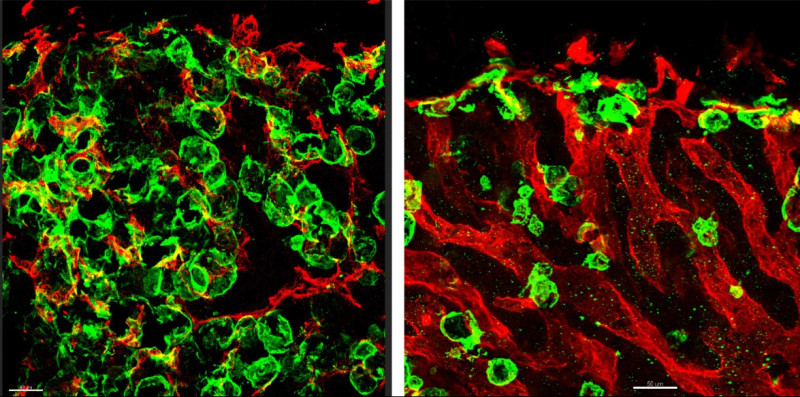By Ellie Cawthera
October 18, 2022
Time to read: 3 minutes
Researchers from the MRC London Institute of Medical Sciences (LMS) have revealed for the first time how oestrogen interacts with bone blood vessels to influence bone formation in mice. These discoveries may lead to new treatment options for postmenopausal women who suffer from osteoporosis.
The Integrative Skeletal Physiology group led by Dr Saravana Ramasamy found that the low levels of oestrogen in postmenopausal mice led to a build-up of lipase peroxide (LPO) – a toxic substance that ages blood vessels inside the bones, weakening them and preventing their formation. Excitingly, Dr Julia Rodrigues, the lead author of the study, managed to repair the damage by targeting LPO using a drug called Liproxstatin, which showed the same improvements as oestrogen treatment.
It is estimated that one in ten women over 60 are affected by osteoporosis worldwide and current treatments carry risks and side effects. This new research has revealed an important way oestrogen promotes bone formation by acting through blood vessels and LPO suggesting that targeting LPO could be an effective alternative treatment to reduce bone loss in postmenopausal women.
“Our study provides significant information towards understanding postmenopausal bone loss, a common condition observed in aging women.”
– Dr Saravana Ramasamy, lead researcher
Using cutting-edge techniques including cell-specific mouse genomics, 3D fluorescent imaging and flow cytometry, Julia found that menopause hindered mice’s ability to form blood vessels inside the bones. This contrasted with pregnant mice, with high levels of oestrogen, who had optimised conditions for bone blood vessel formation.
“When people think of bones, they don’t often think of the blood vessels inside them. They are incredibly important, and we shouldn’t underestimate them”
– Michelle Hendriks, PhD student in the Integrative Skeletal Physiology research team.

Julia also discovered receptors on the walls of bone blood vessels that, when binding with oestrogen, sent a signal to promote the breakdown of fats around the blood vessels. This breakdown of fats is a source of energy that promotes blood vessel growth.
Since menopause causes a drop in oestrogen levels, there is less signal to break down the fat surrounding the blood vessels. This leads to a build-up of fat along with the toxic molecule LPO which causes blood vessels to age preventing bone formation. This damage was further aggravated by the high levels of iron in aged females.
“I think the exciting thing is that after finding this mechanism, we tried targeting LPOs directly using a drug called Liproxstatin. This showed the same bone improvements in the mice as oestrogen treatment, which really suggests targeting LPOs is a promising alternative to oestrogen hormone replacement therapy.”
– Michelle Hendriks, PhD student in the Integrative Skeletal Physiology research team.
In addition, this discovery emphasises the importance of investigating sex differences in the blood vessels to understand the differences observed in the incidences of age-related cardiovascular diseases between males and females.
Julia submitted her thesis and successfully defended her work in front of a panel of experts in March 2022
This research was published in Nature Cardiovascular Research and was led by Saravana Ramasamy.This research was conducted by researchers at the LMS in collaboration with Imperial, the University of Oxford, Heidelberg University Biochemistry Center, Bioscar, and Université de Paris.
This news article was written by Sofia Velazquez Pimentel